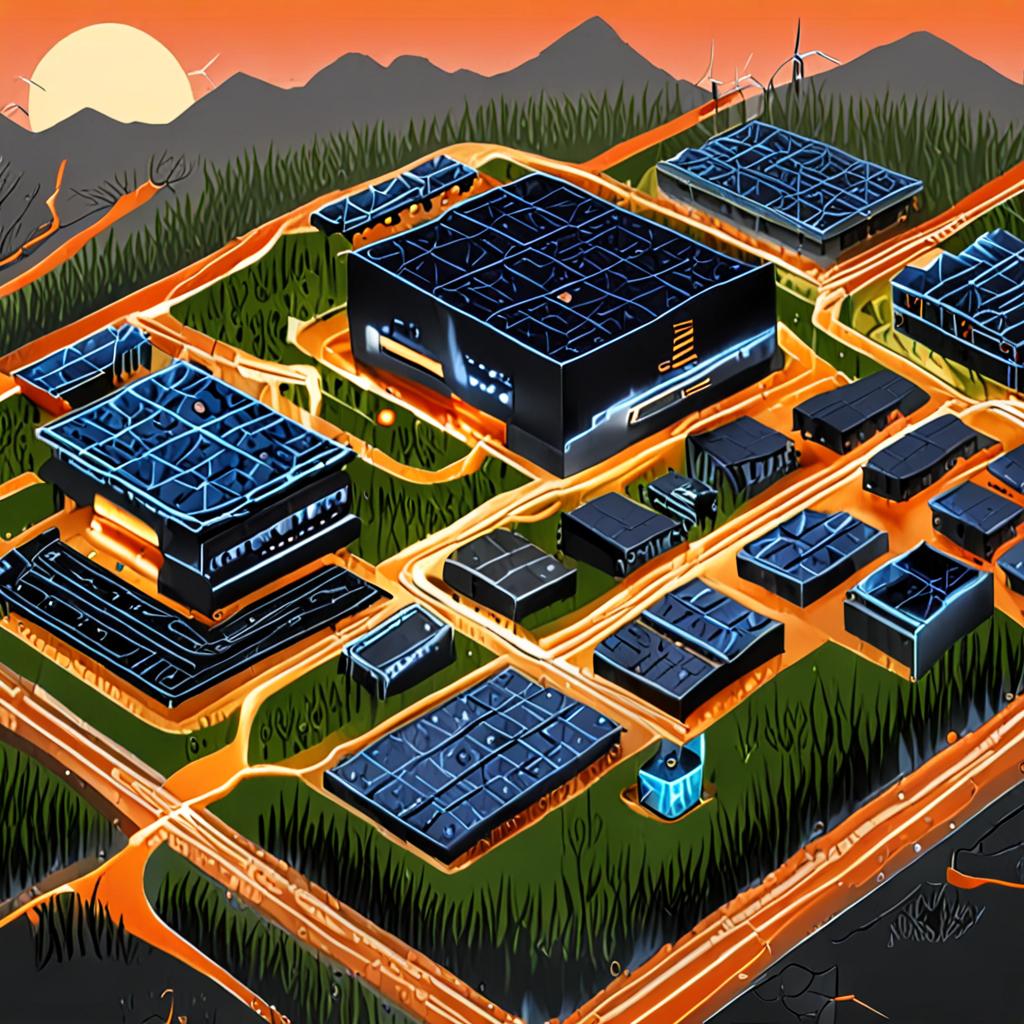Introduction
The integration of deep learning into sustainable energy solutions has the potential to revolutionize the way we generate, distribute, and consume energy. However, one of the significant challenges in the renewable energy sector is the intermittent nature of sources like solar and wind power. Existing methods for predicting energy output from these sources rely heavily on traditional statistical models, which often fail to capture the complexities of weather patterns and energy demand.
For instance, a study by the National Renewable Energy Laboratory found that traditional forecasting models can result in errors of up to 20% in predicting wind power output. This inaccuracy can lead to grid instability, reduced efficiency, and increased costs.
Deep learning techniques, such as recurrent neural networks (RNNs) and convolutional neural networks (CNNs), offer a unique solution to this problem. By analyzing large datasets and identifying patterns in energy output and weather patterns, these models can provide more accurate predictions and improve the overall efficiency of renewable energy systems. In this blog, we will delve into real-world examples of how deep learning is being applied to sustainable energy solutions, exploring the techniques, tools, and outcomes that are transforming the industry.
Deep Learning for Renewable Energy Forecasting and Grid Optimization
Deep learning is revolutionizing the field of renewable energy forecasting and grid optimization, enabling more accurate predictions and efficient management of energy distribution. By leveraging large datasets and advanced algorithms, deep learning models can better capture the complexities of renewable energy sources, such as wind and solar power, and provide more accurate forecasts of energy output.
This is crucial for ensuring a stable and reliable energy supply, as renewable energy sources are inherently intermittent. According to a study by the National Renewable Energy Laboratory (NREL), the use of deep learning-based forecasting models can reduce wind power forecasting errors by up to 45% compared to traditional methods.
In the real-world, companies like Google are already utilizing deep learning for renewable energy forecasting. For example, Google’s DeepMind AI system has been used to optimize the energy output of its wind farms, resulting in a 20% increase in energy production. By harnessing the power of deep learning, the renewable energy industry can drive measurable improvements in efficiency, reliability, and sustainability.
AI-Driven Energy Efficiency in Buildings and Smart Cities
AI-driven energy efficiency in buildings and smart cities harnesses the power of deep learning to optimize energy consumption and reduce waste. This innovative approach matters as buildings account for approximately 30% of global energy consumption and 28% of greenhouse gas emissions. By leveraging AI, buildings can become more energy-efficient, reducing their environmental footprint while decreasing energy costs.
A notable example is the use of AI-powered building management systems (BMS) in Singapore’s smart nation initiative. The Building and Construction Authority (BCA) of Singapore has reported that the implementation of AI-driven BMS has resulted in an average energy savings of 10% in commercial buildings.
AI drives measurable improvement in energy efficiency through predictive analytics, real-time monitoring, and automated control. By analyzing data from various sources, including sensors, weather forecasts, and occupancy patterns, AI algorithms can identify areas of inefficiency and optimize energy usage. This leads to reduced energy consumption, lower costs, and a smaller carbon footprint. Furthermore, AI can also optimize renewable energy integration, such as predicting solar panel output and adjusting energy storage accordingly. By integrating AI with sustainable energy solutions, we can create more efficient, greener, and smarter buildings and cities.
The Role of Deep Learning in Enhancing Geothermal and Bioenergy Systems
Deep learning is transforming the geothermal and bioenergy sectors by optimizing system performance, reducing costs, and predicting energy output. This subset of machine learning enables the analysis of complex patterns in large datasets, leading to more accurate predictions and informed decision-making.
In geothermal systems, deep learning algorithms can analyze temperature, pressure, and flow rate data to predict reservoir behavior, optimize injection and production rates, and identify potential issues before they occur. For instance, a study by the National Renewable Energy Laboratory (NREL) demonstrated that deep learning-based forecasting can improve geothermal power plant output predictions by up to 20%.
In bioenergy systems, deep learning can optimize biomass conversion processes, predict energy yields, and detect anomalies in fermentation processes. By analyzing sensor data and historical trends, deep learning models can identify areas for improvement, leading to increased efficiency and reduced emissions. By integrating deep learning into geothermal and bioenergy systems, operators can unlock significant performance gains, driving the transition towards a more sustainable energy future.
Conclusion
Deep learning has revolutionized the field of sustainable energy by improving the efficiency and reliability of renewable energy sources, such as solar and wind power, while also optimizing energy consumption and reducing waste. The integration of AI and machine learning algorithms has enabled the development of smart grids, predictive maintenance, and energy storage systems, ultimately driving the transition towards a more sustainable and decarbonized energy landscape.
To further harness the potential of deep learning in sustainable energy, two practical next steps can be taken:
- Experiment with transfer learning: Leverage pre-trained deep learning models and fine-tune them for specific energy-related tasks, such as energy forecasting or fault detection, to accelerate the development of new applications.
- Adopt Explainable AI (XAI) techniques: Implement XAI methods to provide insights into the decision-making processes of deep learning models, ensuring transparency and trustworthiness in energy-related AI applications, and facilitating the identification of areas for further improvement.
